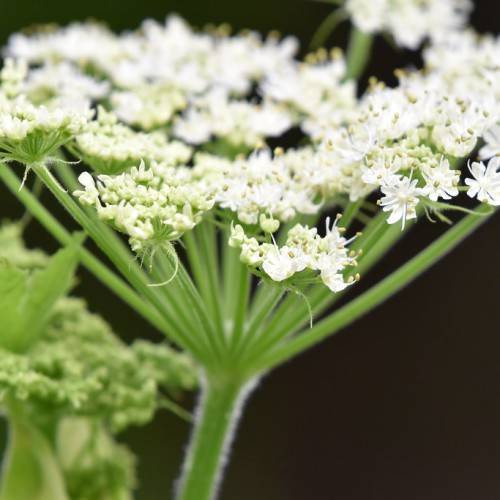
cow parsnip
Heracleum lanatum ( syn. of H. sphondylium montanum, H. maximum )
Cycle:
Herbaceous Perennial
Watering:
Frequent
Hardiness Zone:
3
Flowers:
Flowers In Summer
Sun:
Full sun
Soil:
Bog, Well-drained
Fruits:
Fruits In Summer Ready In Summer
Leaf:
Yes
Growth Rate:
High
Poisonous To Humans:
Yes
Poisonous To Pets:
Yes
Drought Tolerant:
Yes
Invasive:
Yes
watering
Cow parsnip should be watered once every 5 to 7 days or when the top inch of soil is dry to the touch. When watering cow parsnip, it is important to avoid wetting its leaves, as they may be sensitive to wet conditions. Instead, water should be applied to the base of the plant or around its root system. When watering cow parsnip, it is important to use lukewarm water and to avoid overwatering, as this will lead to root rot and other diseases caused by poor drainage.
sunlight
Cow parsnip (Heracleum lanatum) prefers full sun exposure, particularly in the summer months. It should receive 6-8 hours of direct sunlight each day. During the spring, cow parsnip can tolerate some periods of partial shade. In the winter, the plant should receive at least 4 hours of direct sun each day. With too much shade, the growth and flowering will be affected. For optimal growth, ensure that your cow parsnip is in an area that receives ample direct sunlight.
pruning
Cow parsnip is best pruned during the dormant season, typically early winter. This species responds well to regular pruning and will flower at the end of the following summer, providing beautiful white blooms. Pruning should be done when the leaves have died back and before any new growth begins. It is important to remove dead or weak foliage to encourage new and healthy growth. When pruning cow parsnip, remove any dead, diseased or insect-damaged stems and branches at ground level. For a more formal look, prune the center stem and the stems around it to about 2-thirds their original size. This will keep the plant tidy and promote new growth. Pruning too much may result in its death, so be sure to keep the pruning to no more than a third of the total size.
